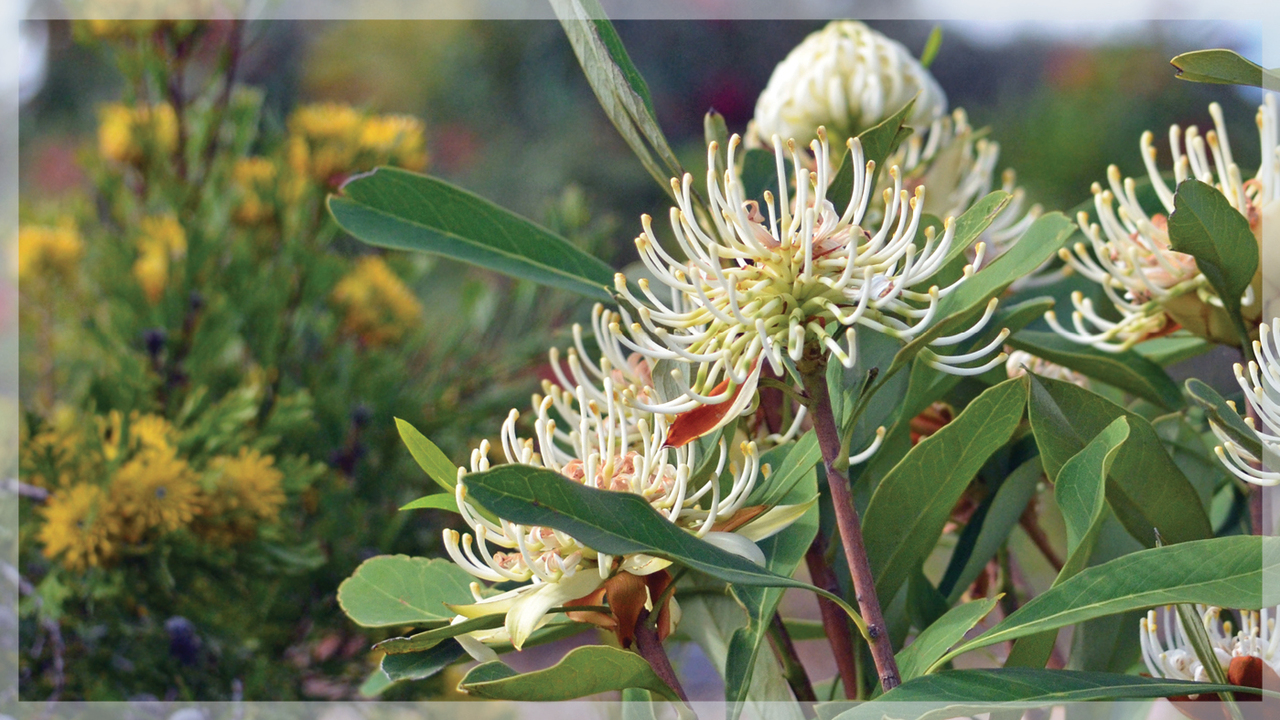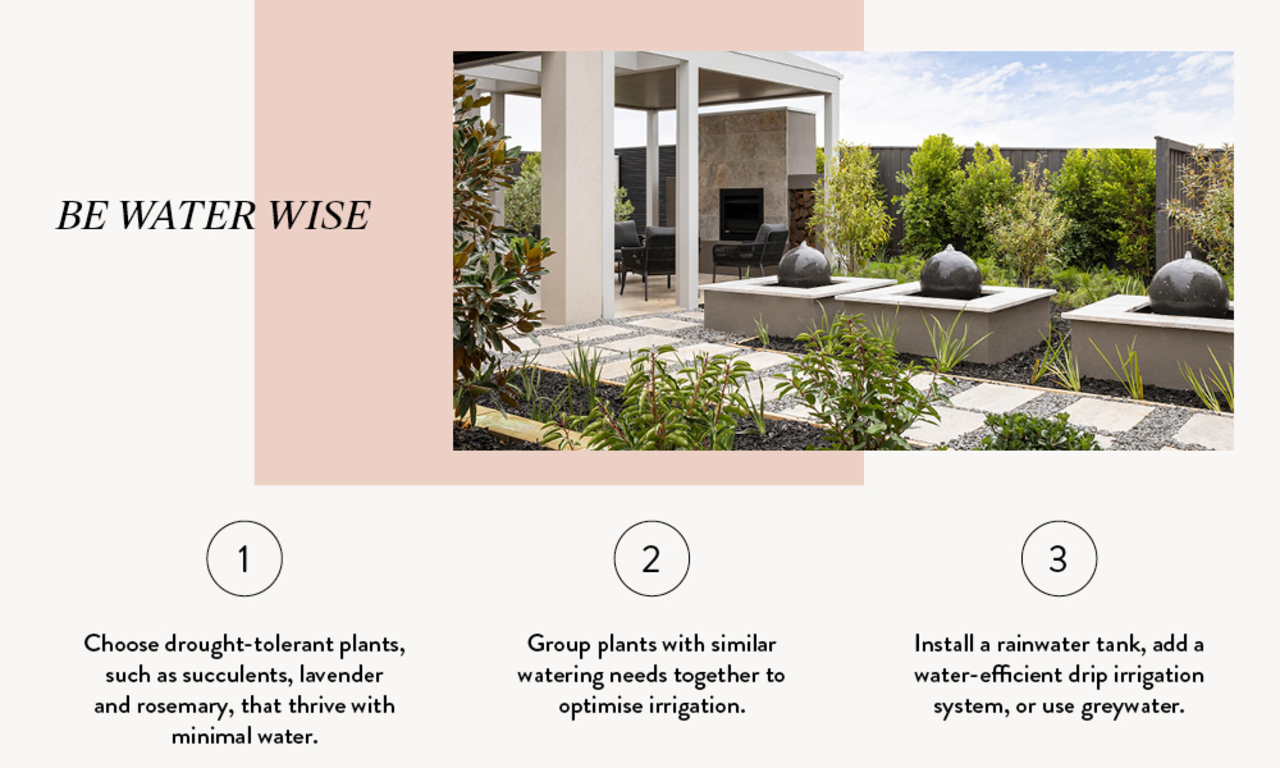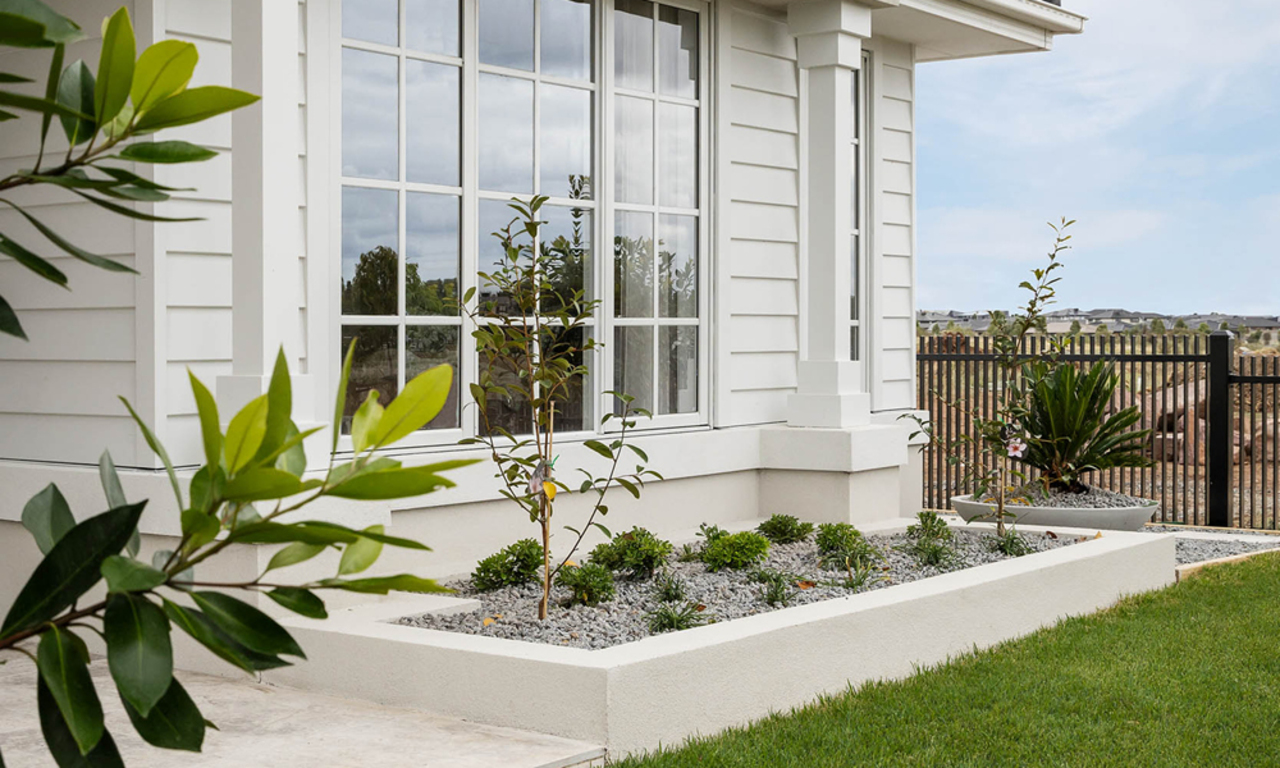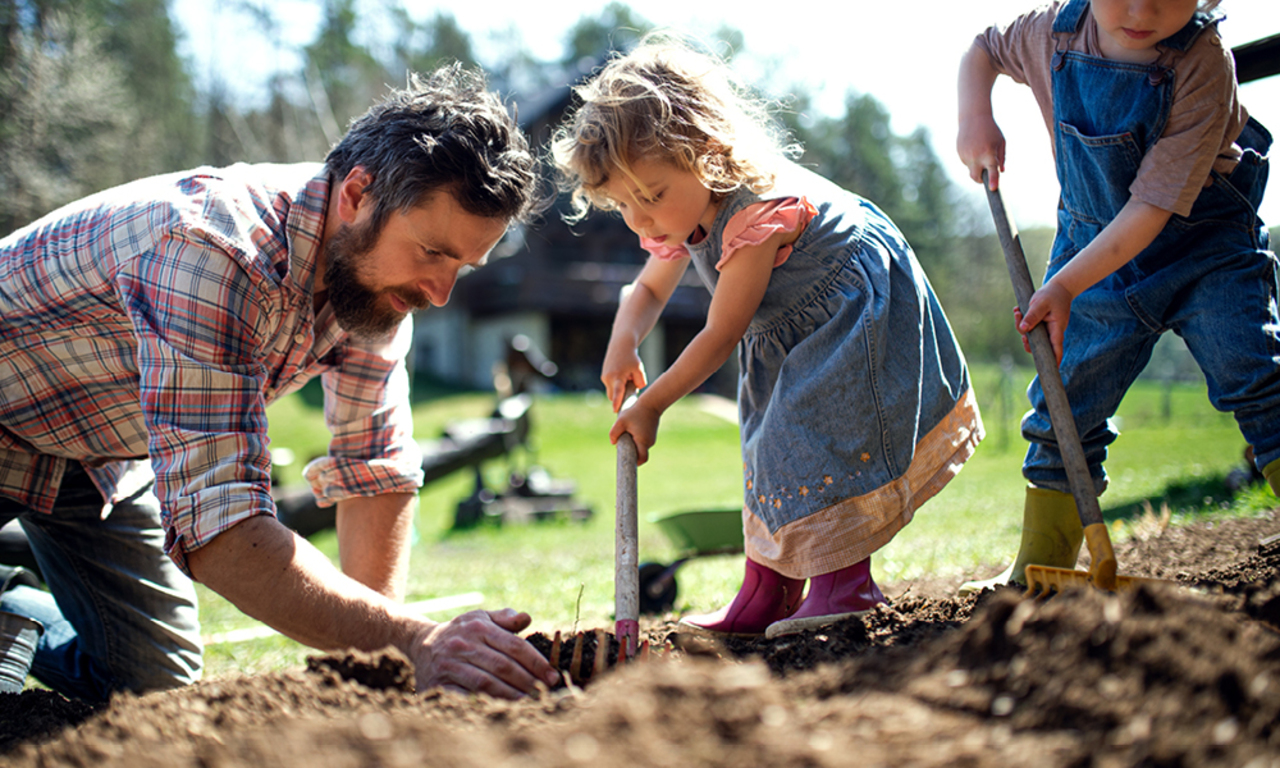10 Eco-Friendly Landscaping Ideas to Transform Your Yard
by Carlisle Homes

Looking for ways to make your green space greener? These nine eco-friendly gardening ideas will not only benefit your yard, but local wildlife and your budget too.
Adopting eco-friendly landscaping ideas allows you to create a vibrant, resilient garden that conserves resources and supports local eco-systems. From native plants that thrive in Melbourne’s climate and clever water-saving techniques, here are nine earth-friendly ideas for your front and back garden.
1. Design a sustainable layout
When planning your garden’s layout, make sustainability the priority. Consider companion planting, where you place plants together that benefit one other. For example, some plants might enhance soil fertility, while others might repel bugs that affect neighbouring plants. Research which plants work well together or speak to a qualified landscape designer for suggestions.
Be aware of the microclimates within your garden and position plants to suit. For instance, some parts of your yard might be warmer or cooler, receive more or less sun, or be more or less exposed to wind. Tailor your plant selection and positioning to optimise the conditions.
2. Be water wise
Choose drought-tolerant plants, such as succulents, lavender and rosemary, that thrive with minimal water. Group plants with similar watering needs together to optimise irrigation.
Be savvy with how you hydrate your garden. Install a rainwater tank, add a water-efficient drip irrigation system, or use greywater, which is wastewater from your washing machine and bathroom showers, tubs and basins. Bear in mind that greywater is unsuitable for container plants, and should be free of chemicals like strong detergents and laundry brighteners.

Be savvy with how you hydrate your garden. Install a rainwater tank, add a water-efficient drip irrigation system, or use greywater.
3. Design your garden for your lifestyle
Consider how you want to use your outdoor space and design it to suit. For example, if you would like the kids to play outside, include a decent-sized lawn; if you want to grow your own fruit and vegetables, include space for a veggie patch; if you like the idea of growing fresh herbs around your garden’s perimeter, incorporate easy-to-navigate pathways.
4. Plant for the Melbourne climate
Native plants that suit our local climate require less water and upkeep, which is good news for the environment and your weekends. They are also easier to grow, more resistant to pests and will attract pollinators, such as bees and butterflies.
“Yareena creeping boobialla is a native hybrid ground cover specially engineered to suit our climate. It’s a great border plant that will spread to large areas, with foliage that ranges from green to purplish, and small white flowers that occur year-round,” says Mark Browning, landscape designer and principal at Mark Browning Landscape Design, who has designed over 500 gardens in Carlisle display homes.
“Or consider Kingsdale tussock grass – a native grass engineered to be smaller and tuftier than its parent, common tussock grass,” he says.
5. Consider sustainable lawn alternatives
Traditional lawns can be water-intensive and high-maintenance. A drought-tolerant ground cover can be more sustainable and just as beautiful.
“I favour Asiatic jasmine ground cover, paired with shrubs such as snow maiden Indian hawthorns, and feature trees like white crepe myrtles. All are easy to grow, drought-tolerant once established, and require minimal maintenance,” says Browning.

A drought-tolerant ground cover can be a more sustainable option to replace lawn, and just as beautiful.
6. Give soil health a boost
Improving the health of your soil not only makes your plants grow stronger, but improves water retention and reduces erosion.
Start a compost heap or bin to recycle garden waste and kitchen scraps into nutrient-rich compost. Cover soil with a thick layer of compost. Worms and other soil organisms will feed on it and release nutrients into the ground, which plant roots absorb.
Apply organic mulch, such as wood chips or straw, to garden beds to keep the moisture in, suppress weeds and improve soil structure.
7. Choose eco materials
When adding structures like decks, pergolas or garden beds, minimise your eco footprint by choosing sustainable materials. Recycled timber and bricks are environmentally friendly and will add character to your garden.
Source locally made designs, such as a steel screen or a handcrafted outdoor furniture, to support local craftspeople and connect your home to its surrounds.
Consider permeable materials, such as gravel, for garden paths, which allow rainwater to soak into the soil and reduce runoff.
8. Include energy-efficient lighting
Choosing energy-efficient outdoor lighting reduces electricity usages as well as light pollution.
Consider solar-powered lights that are charged by the sun in the day and provide illumination at night, with zero electricity. Or install energy-efficient LED bulbs that consume less electricity and last longer than traditional bulbs.
9. Add wildlife-friendly features
Encourage wildlife in your garden to support local ecosystems. Install bird baths and feeders with fresh water and suitable seeds to attract native birds. Create habitats for beneficial insects and small animals with log piles, rock gardens and insect hotels. Plant flowers that attract bees, such alyssum, aster, sunflowers, zinnia and Californian poppies.

Browning’s top growing picks for fruit and vegetable gardens in Melbourne include cabbages, capsicum, carrots, tomatoes, leeks, rocket, lemon trees and mandarin trees.
10. Grow your own fruit and vegetables
Freshly grown fruit and vegetables are more nutrient-dense than store-bought varieties, and can save your money.
Browning’s top growing picks for Melbourne gardens include cabbages, capsicum, carrots, tomatoes, leeks, rocket, lemon trees, mandarin trees, and bananas (so long as they’re in a warm, protected spot).
Did you find this Home Files blog helpful?
Don't forget to bookmark it so you can revisit it later!
Pop into one (or more!) of Carlisle’s 70+ stunning display centres, located right across Melbourne, for landscaping ideas, interior inspiration and so much more. You’ll find details and directions to all of their display homes here.
